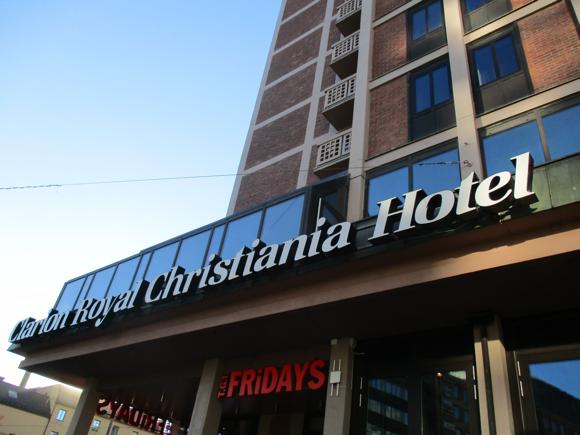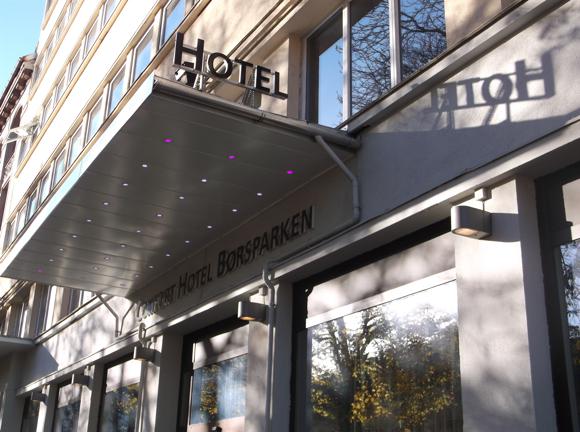Teams, tales and tips – a guide to the local game
The Norwegian capital of Oslo has been home to the national team and hosted the cup final since the early 1900s but its clubs have rarely claimed the league crown.
As a stage for prestigious matches, Oslo has witnessed some of the greatest moments in the history of the domestic game: Norway’s famous victory over England in 1981 (‘Your boys took a hell of a beating’), another in 1993, and Tromsø’s cup win of 1986 that has gone down in local legend.
Oslo was still Christiania and Norway ruled from Stockholm when football first came to these shores, specifically to Bergen, before taking root in Skien. Oslo’s two most enduring clubs and main rivals, working-class Vålerenga from the east of the city and Lyn from the west, were formed shortly afterwards.



Back then the dominant side was Oslo’s Mercantile, who provided nine of the players who represented Norway in its first international against Sweden in 1908. Formed five years earlier, following the first school tournament in the capital, Mercantile created the first grass pitch in Oslo, Gressbanen, home to the national side in the 1920s. A record 17,000 gathered for Holland’s visit in 1919.
Just as Gressbanen north-west of town was superceded by today’s national arena of Ullevaal from 1926 onwards, so Mercantile’s football operation was wound down and closed completely in 1954. In 1968, Mercantile were revived in Langerud, south-east of Oslo, and slowly climbed up to as far as the third flight in 1989. There then followed a complex series of mergers and currently venerable old ‘Mercan’ play in the seventh flight.
Before Ullevaal, before Gressbanen, Norway’s first XI played at the legendary skating arena of the Frogner stadion, with its statue of world champion and Hollywood star Sonja Henie. The Frogner is still used for football, mainly by another club from the early days, Frigg. Formed in 1904, Frigg had won the Norwegian Cup three times by 1921. Modern times have not so kind to Frigg, who notched up one sole European appearance, a defeat to Dunfermline in the Inter-City Fairs’ Cup in 1966-67. In October 2015, Frigg gained promotion from the fourth-flight 3.Divisjon.



In the 2.Divisjon, Frigg will meet Skeid, another historic Oslo club who celebrated their centenary in 2015. More successful in the post-war era, particularly the 1950s that saw four of their seven cup wins, Skeid won their solitary league title in 1966.
Skeid having moved out in 2012, another of Oslo’s main sports arenas, the Bislett, now plays host to Lyn Oslo. For more than half a century, though, the Bislett was home of Lyn’s great rivals, Vålerenga. It was there that the Bohemians won their first four league titles, three in their golden era of the early 1980s.
These rivals haven’t met in the league since 2009, shortly before Lyn were declared bankrupt. Revived by their own supporters, Lyn slowly moved up the divisions, finding a permanent home in the Bislett, where 11,000 gathered for a cup game with Vålerenga on May Day 2011.



Vålerenga had long vacated the Bislett for the Ullevaal, previously Lyn’s home. Renovated in 2013, the national arena filled to around a third of its 28,000 capacity for most Vålerenga league games. Oslo’s only top-flight club then built their own stadium, Valle Hovin, opened near Helsfyr T-bane in September 2017.
Clustered close to the capital is a number of Tippeligaen teams, the nearest being Stabaek in the suburb of Baerum, at Bekkestua on Oslo’s T-bane metro network.
Getting Around
Arriving in town, local transport and timings

Oslo’s main airport is Gardermoen, 35km (22 miles) north-east of town.
The city is also served by two low-cost airports: Torp near Sandefjord, and Moss near Rygge, south of Oslo by 110km (68 miles) and 65km (40 miles) respectively.
From Gardermoen, the swish Flytoget train (every 10mins) takes 20mins to Oslo S (‘Sentral’; Nkr180/Nkr200 from the ticket desk, under-16s free with adult). Coming back from Oslo S, you can check in for your flight at the Flytoget area of the train station.
A regular NSB train from the airport (‘Lufthavn’ on timetables; every 20-30mins, 23mins journey time) is cheaper at Nkr90 from machines and can be incorporated as part of a day pass for Oslo for Nkr190 (including a day return to Gardermoen if need be).
A Norges Taxi (08000) to town has a fixed price of Nkr749 (Nkr949 at night).

From Torp, the Torp Ekspressen bus (Nkr240) connects with arriving flights and takes 1hr 45mins to reach Oslo bussterminal near Sentral rail station. Alternatively, an hourly NSB train takes 1hr 40mins from Torp station (Nkr260) – the short shuttle bus between Torp airport and station is included in the price.
A local Vestfold taxi (334 20 200) takes 80mins into Oslo and costs Nkr2,300-Nkr3,000 depending on the time of day.
From Moss Rygge, the Rygge-Ekspressen bus connects with arrivals and takes 1hr to reach Oslo bussterminal (Nkr170). Alternatively, an hourly shuttle bus runs to nearby Rygge station for the hourly NSB train to Oslo S (50mins, Nkr160, including shuttle bus). You’ll have time for a swift beer at the homely Lageret Pub on the platform, with TV football and retro vinyl on the walls.
A local Moss Taxi (06950) to Oslo should cost Nkr1,250-1,700 depending on the time of day.
Once in Oslo, local transport, Ruter, consists of the five-line T-bane metro network, trams, local trains, buses and ferries. A single ticket is Nkr30 (Nkr50 on board, valid for 1hr include a return. A 24hr pass is Nkr90.
For an Oslo Taxi, call +47 2238 8090.
Where to Drink
The best pubs and bars for football fans




Despite justifiable gripes about the price of beer, foreigners seem to have a good time in Oslo, where bars dot the city centre around the National Theatre.
Your first port of call should be ever-busy Bohemen, nickname of the city’s working-class club Vålerenga, whose history is depicted around the walls of the pub-like interior. Note also the T-shirt bearing the timeless TV commentary (‘your boys…’) of Bjørge Lillelien from 1981. Opened during the 1998 World Cup, it’s been an affordable mainstay of the city’s bar scene ever since. Look out for the blue-and-red sign below a Chinese restaurant.
Nearby on the main square are a branch of cross-Scando US-style sports bar chain O’Learys and, opposite, the long-established Andy’s, self-styled ‘sportspub & pianobar’. It also has a branch in the edgy Grønland area behind the Bussterminal.





Back at the National Theatre, cosy corner pub Paddy’s (Stortingsgata 28) is preferred by Lyn Oslo fans while nearby gastropub Amundsen displays retro beer ads rather than provide any decorative dedication to the legendary Polar explorer. The Dubliner offers live folk nights and TV football but charges a ridiculous entry (Nkr90!!) on busy weekends.
Nearer Central Station, on prominent pedestrianised Karl Johans gate, the four-floor Scotsman can look back on four decades of TV football, live music, pub grub and rikstoto betting on trotting races.
On a quiet corner between a burgeoning business quarter and Grønland, the straightforward Oslo Sports Pub (Schweidgaardsgate 50) fills on big match nights.
Finally, if you’re getting a domestic flight out of Gardermoen, there’s a handy branch of O’Learys between gates 20 and 22.
Where to stay
The best hotels for the stadium and city centre







Visit Oslo has an online booking service.
Part of the national stadium complex, the Thon Hotel Ullevaal Stadion comprises 144 guest rooms and a ground-floor restaurant, Egon, that doubles up as a pre- and post-match hangout. Its third-floor sports bar is not open to the public, however. The acclaimed Thon group has 14 other properties around the city, including Opera by the Flytoget terminal at Oslo Sentral and Cecil in the city centre.
Also convenient for both train and bus stations are the Radisson Blu Plaza, Norway’s largest and tallest hotel, the four-star Clarion Royal Christiania and the Comfort Hotel Grand Central, with amenities such as free ice skating, elevators in Braille and use of fax and photocopying machines.






In the same group, the Comfort Børsparken is also close, convenient but tucked away and quiet. The nearby Citybox is a budget choice, simple, neat rooms with push-button check-in and -out. Also (relatively) budget is the Anker, with a hostel next door.
If you’d rather be in the centre, then the contemporary HTL is stylish and business-friendly. Alongside, P-Hotels is a decent mid-range option. For a unique stay, on an island close to downtown Oslo, The Thief features luxury rooms, a cutting-edge restaurant and regular unplugged music sessions.
For class and tradition, the landmark Grand, now with a sky bar and spa, has been pampering the rich and famous since 1874. Next door, the Best Western Karl Johan is also set in a fin-de-siècle confection.










